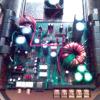-
Recently Browsing 0 members
No registered users viewing this page.
-
-
Recent Topics
-
- 7 comments
- 331 views
-
- 1 comment
- 405 views
-
- 1 comment
- 161 views
-
- 1 comment
- 148 views
-
- 3 comments
- 1,006 views
-
- 8 comments
- 1,920 views
-
-
-
Recent YouTube Posts


